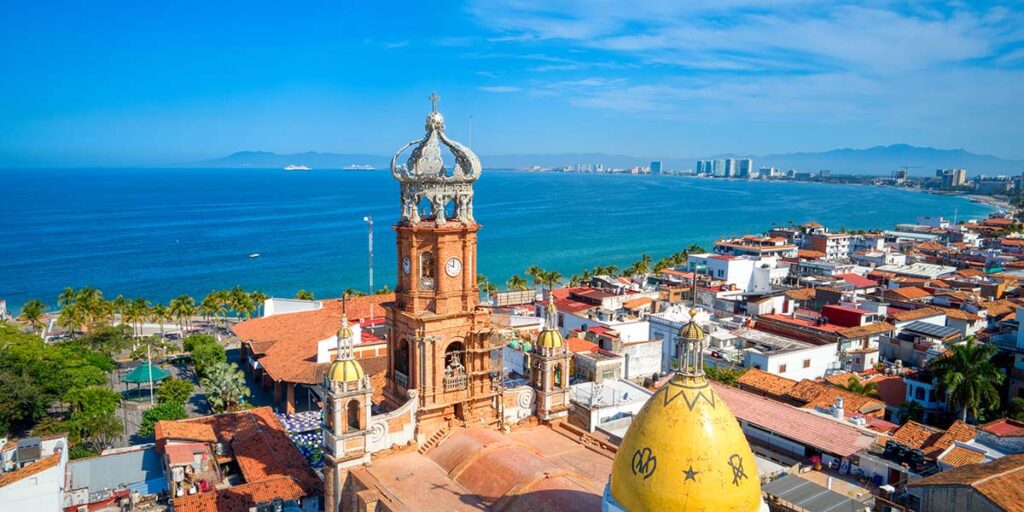What is the type of weather in Puerto Vallarta?

When planning a trip to Puerto Vallarta, it's essential to understand the type of weather you can expect during your visit. Puerto Vallarta, located on the Pacific coast of Mexico, offers a tropical climate that attracts tourists from around the world. In this article, we will delve into the different aspects of Puerto Vallarta's weather, including its climate, seasonal patterns, and the best time to visit.
Understanding Puerto Vallarta's Climate
Puerto Vallarta enjoys a tropical climate, characterized by warm temperatures and high humidity throughout the year. The city experiences two main seasons: the dry season, which runs from November to May, and the rainy season, which occurs from June to October.
Factors Affecting Puerto Vallarta's Weather
Several factors influence the weather in Puerto Vallarta. One of the significant factors is its location on the Pacific coast, which exposes the city to the influences of the Pacific Ocean, including ocean breezes and the potential for tropical storms.
Seasonal Weather Patterns
The dry season in Puerto Vallarta is known for its warm and sunny days, with temperatures averaging around 85°F (29°C). The evenings are comfortably cooler, providing a pleasant atmosphere for outdoor activities. On the other hand, the rainy season brings increased humidity and rainfall. Although showers are frequent, they are often short-lived and followed by clear skies.
Best Time to Visit Puerto Vallarta
The best time to visit Puerto Vallarta largely depends on personal preferences and the activities you plan to engage in. The dry season, from November to May, is generally considered the peak tourist season, as it offers ideal beach weather and a lower chance of rainfall. If you prefer a quieter atmosphere and don't mind occasional showers, visiting during the rainy season can be a great option as well.
Activities and Attractions for Different Weather Conditions
Puerto Vallarta offers a wide range of activities and attractions that cater to various weather conditions. During the dry season, you can indulge in water sports, explore the city's vibrant nightlife, or simply unwind on the beautiful beaches. In contrast, the rainy season provides opportunities for jungle adventures, exploring waterfalls, and experiencing the lush greenery of the surrounding mountains.
Preparing for Puerto Vallarta's Weather
When packing for your trip to Puerto Vallarta, it is essential to consider the weather conditions. For the dry season, lightweight and breathable clothing, along with sunscreen and a hat, are recommended. During the rainy season, be sure to pack a lightweight rain jacket or umbrella, as well as mosquito repellent to tackle the increased humidity and occasional showers.
Conclusion
Understanding Puerto Vallarta's weather patterns can greatly enhance your travel experience. Whether you visit during the dry or rainy season, Puerto Vallarta offers a unique blend of natural beauty, vibrant culture, and warm hospitality, making it a popular destination for travelers seeking a tropical getaway.
Frequently Asked Questions
1. What is the average temperature in Puerto Vallarta?
The average temperature in Puerto Vallarta ranges from 75°F (24°C) to 90°F (32°C) throughout the year, with slight variations between the dry and rainy seasons.
2. Does Puerto Vallarta experience hurricanes?
While Puerto Vallarta is located in a hurricane-prone region, the occurrence of hurricanes is relatively rare. However, it is always advisable to stay informed about weather updates and follow any instructions or warnings provided by local authorities.
3. Is it safe to visit Puerto Vallarta during the rainy season?
Yes, it is generally safe to visit Puerto Vallarta during the rainy season. However, it is important to be aware of potential heavy rainfall and occasional storms. It is recommended to check weather forecasts and plan activities accordingly.
4. What are the most pleasant months to visit Puerto Vallarta?
The months of December to April are considered the most pleasant to visit Puerto Vallarta, as they fall within the dry season. These months offer warm temperatures, lower humidity, and a lower chance of rainfall, providing ideal conditions for outdoor activities and beach relaxation.
Leave a Reply